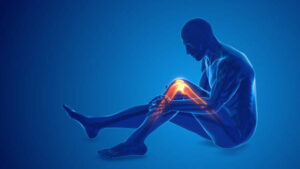What Is Osteoarthritis?

The word arthritis means” common inflammation” that is, a painful joint, warm to the touch, conceivably red, blown, and associated with a loss of function.” Osteo” is Greek for” bone”. Arthritis isn’t a single disease. Further than 100 different conditions can affect the joints and their conterminous bones, muscles, and apkins. They’re classified into colorful major types of arthritis, depending on whether or not inflammation, infection or bleeding is the major element. All of these types of arthritis are fully different, with different donations, symptoms, and treatments. Osteoarthritis( OA) is the most common form of arthritis. It’s a non-inflammatory type of arthritis, which means that inflammation isn’t the crucial element. It’s fully different from the less common rheumatoid arthritis, which is seditious arthritis in which the body’s vulnerable system attacks its apkins, causing inflammation, and from all other types of arthritis.
The causes and treatments of these other arthritis-related conditions differ from OA. While OA occasionally may be painful, it isn’t always disabling, and unlike rheumatoid arthritis, is doubtful to produce severe disfigurement of the joints. Osteoarthritis can involve a number of joints, but it isn’t a complaint that spreads to involve other apkins or joints throughout the body.
Osteoarthritis( OA) has been called a” degenerative” condition because it’s caused, in part, by wear and tear- and- gash of a joint over time. Its impact is significant OA occurs in both men and women and generally develops after age 45. further than 16 million Americans, including over 50 of people over 65, have some degree of osteoarthritis. Aged people frequently do not realize that they’ve OA if they’re free of pain and other symptoms. still, x-rays frequently reveal some OA of the chine or fritters in senior individualities.
Osteoarthritis develops in a joint when cartilage- the smooth candescent towel that lines and cocoons the ends of the bones inside a joint,- begins to break down. This can be from Dragged” wear and tear- and- gash” as we progress previous injury or damage to the joint from trauma or infection Cartilage that’s altered by other complaint or is genetically weak. But in utmost cases we simply do not know what causes it. Unfortunately, damaged cartilage can not heal to come normal again, though tremendous exploration is underway developing styles to restore damaged cartilage.
How It Progresses Theni’s how OA progresses

The smooth cartilage that lines and protects the bone ends begins to retain water, and changes do in some of the chemical substances that make up the cartilage bitsy cracks develop in the cartilage, which also splits farther forming checks The ends of the bones begin to cake and grow out from the common periphery. These small bone growths are called osteophytes or” spurs”. Actually, these spurs are nature’s way of trying to help the damaged joint by allowing the cargo through the joint to be redistributed. But these bony outgrowths frequently intrude with the medium of common movement.
Excrescencies, which are small depressions, develop in the bone just beneath the damaged cartilage fractions of damaged cartilage or bone may break off and float around freely in the joint as’ loose bodies’ and may beget fresh problems. As the cartilage becomes more damaged, the common space becomes narrower and narrower. The corrosion of cartilage within a joint can irritate and inflame the inner filling of the joint called the synovial membrane. and beget it to produce redundant fluid. It typically produces a lubricant called synovial fluid, which helps to lessen disunion in the joint.
The fluid may also make up within the joint and lead to sensible lump. When the bumper system of the joint is lost, the bones may grind sorrowfully against each other. The joint can begin to harden, and movement is bloodied. Some people are fortunate in that despite having these rather severe osteoarthritis changes in a joint, they witness veritably little, or no pain at all.
Osteoarthritis generally strikes the Weight- bearing joints( knees, hips, back, bases) Hands chine The knee is the most generally affected joint. still, it frequently occurs in only one joint but may affect any number of joints, If osteoarthritis develops in the hips or knees. still, a many cutlet joints may come arthritic at the same time, If the hands are affected. Bony lumps that arise in the middle cutlet joints are called Bouchard’s bumps. Lumps that arise in the last cutlet joints are called Heberden’s bumps. Heberden’s bumps do most frequently in women, who are also prone to witness osteoarthritis of the hands in general, as well as the knees.
Nice To Know Q What’s the difference between osteoarthritis( OA) and rheumatoid arthritis( RA)? A The principle features of the two conditions aren’t the same, and their treatment is veritably different. In OA, the cartilage in the joint becomes damaged and, eventually, the joint degenerates. The joint isn’t primarily inflamed, although inflammation may do as a late result.
On the other hand, in RA, there’s original inflammation of the filling of the joint. This produces a soft, tender lump in discrepancy to the bony blowup of OA. Cartilage damage occurs latterly as a result of this inflammation. The pain of OA is frequently least worrisome in the morning but may gradationally worsen during the day. With RA, the pain and stiffness generally is worst on waking, but gradationally improves during the day.
Data About Osteoarthritis
Osteoarthritis is an ineluctable part of aging and can affect any joint. It’s the oldest discovered health problem having been set up in dinosaur joints and Egyptian corpses.
Osteoarthritis is the most wide form of arthritis, affecting about 16 million people throughout the United States. The Arthritis Foundation estimates that some 59 million Americans- nearly 20 of the population- will have arthritis by the time 2020, as age catches up with the baby boomers. instigative exploration to replace damaged cartilage is showing important pledge